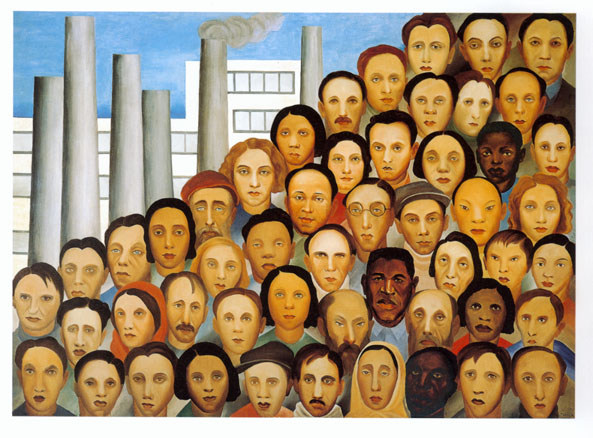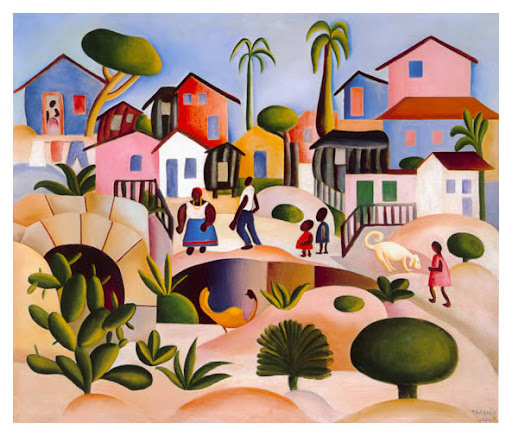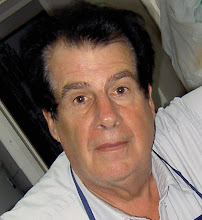
http://www.artistas-americanos.com/latinos/tarsila/index.html Galería
http://www.artistas-americanos.com/latinos/tarsila/images/slideshow.html Slideshow
Capivari, 1886-São Paulo, 1973) Pintora brasileña. En 1916 comenzó sus estudios de arte en Sâo Paulo y en 1920 los continuó en París, donde estudió con los pintores cubistas franceses André Lhote, Fernand Léger y Albert Gleizes. Celebró su primera exposición individual en París en 1926, y en ella se pudo ver la que sería su obra más emblemática, La Negra (1923). Su relación con el escritor brasileño Oswald Andrade, con quien vivió durante unos años, contribuyó al intercambio de ideas entre artistas brasileños de vanguardia y escritores y artistas franceses. Sus telas reflejan una gran diversidad de influencias. Por lo ...
http://www.artistas-americanos.com/latinos/biography/tarsila.html
Oswald de Andrade and Tarsila do Amaral--or "Tarsiwald," in Mário de Andrade's felicitous expression--constitute today true emblems of the Week of Modern Art. The joining of their names represents the fusion of body and mind united by the productivity of the ideology of Pau-Brasil and Anthropophagy. They met in São Paulo, in the celebrated year of 1922, when Tarsila returned to Brazil after studying in Paris for a two-year period. It' is with this "couple mad with life" that the history of modernism in Brazil, begun with the 1917 Malfatti exhibit, enters its heroic phase. The following year the Tarsila and Oswald duo is in Paris, making contact with the most important artistic trends of the time. In addition to Tarsila's apprenticeship in the studios of Andre' Lhote, Albert ...
http://www.artistas-americanos.com/latinos/biography/tarsila_en.html



No hay comentarios:
Publicar un comentario